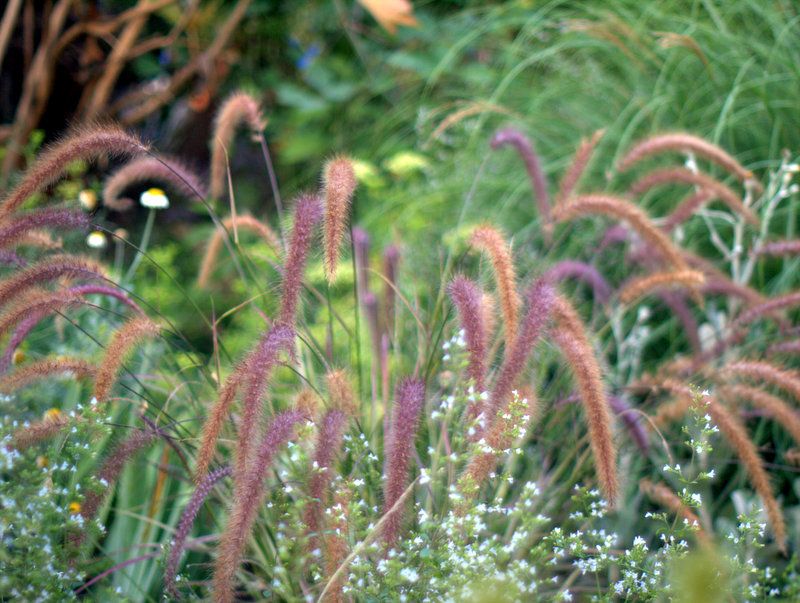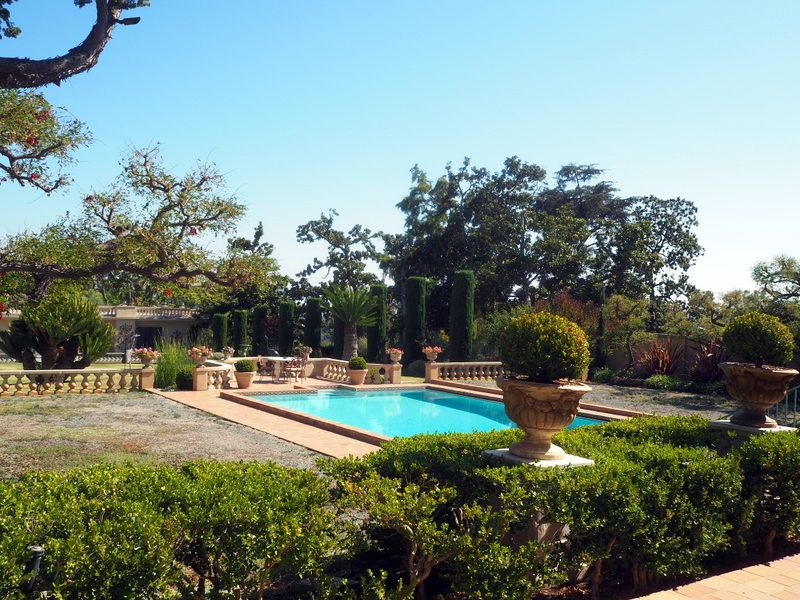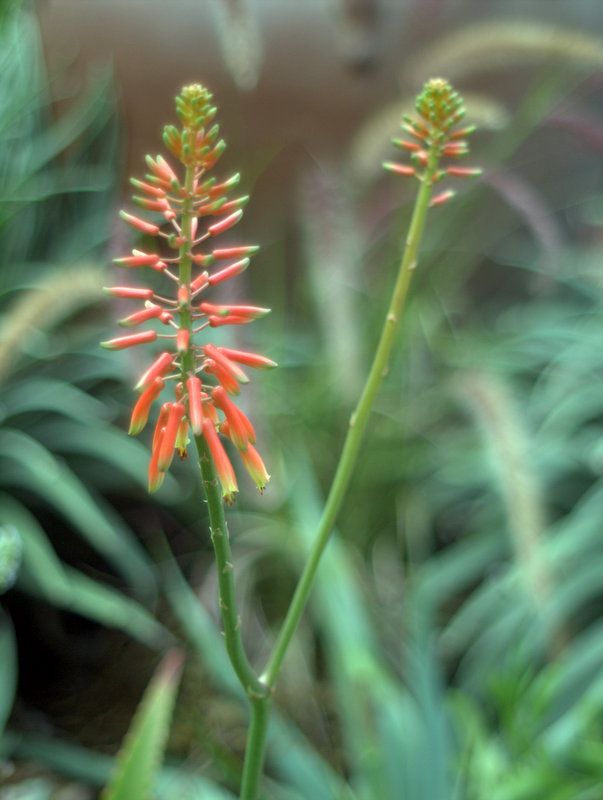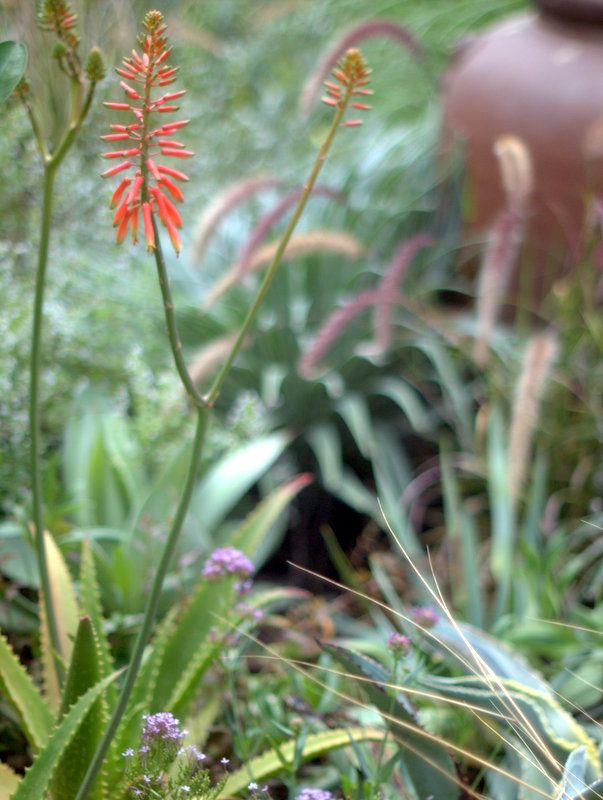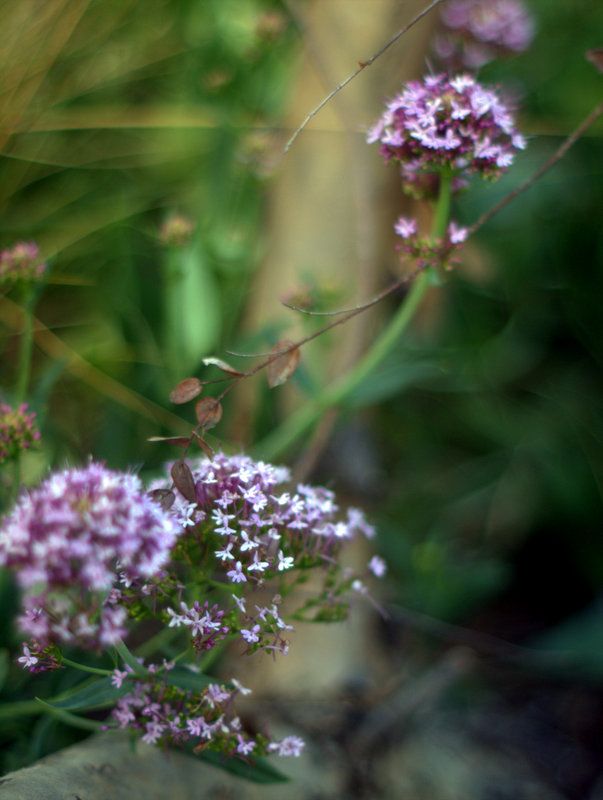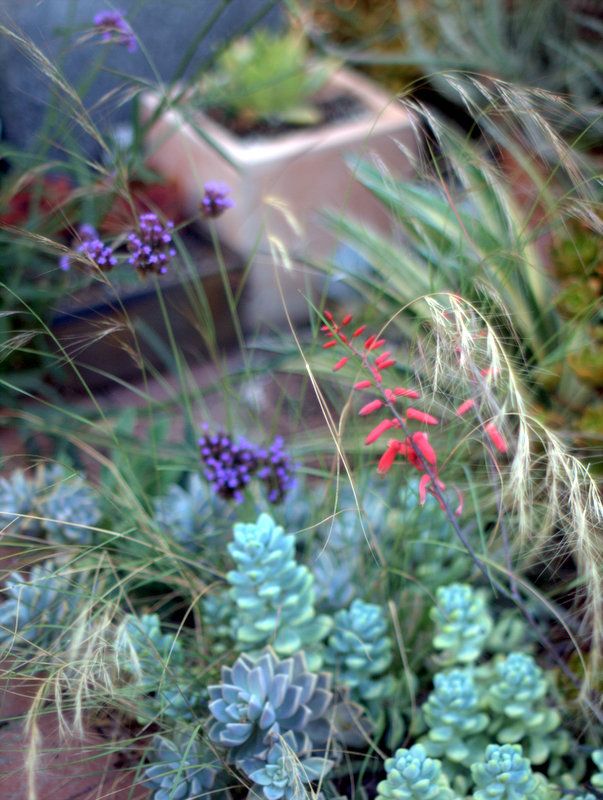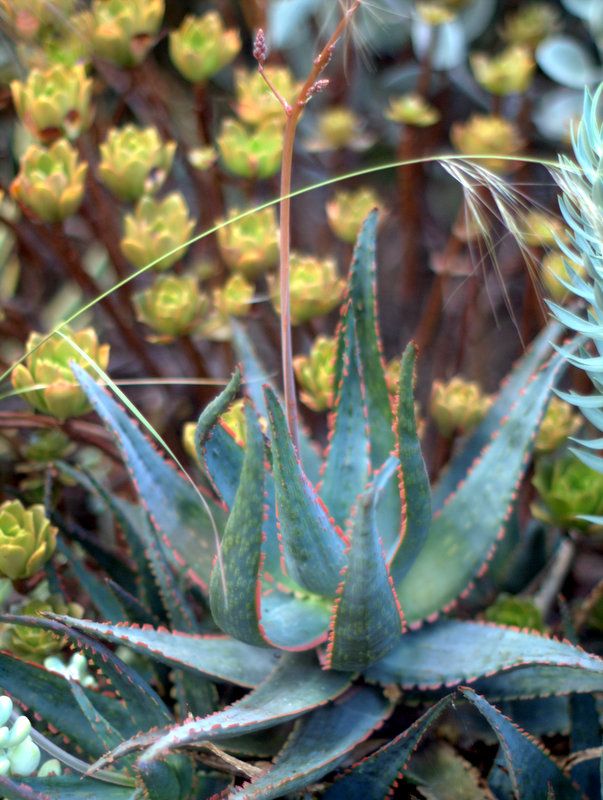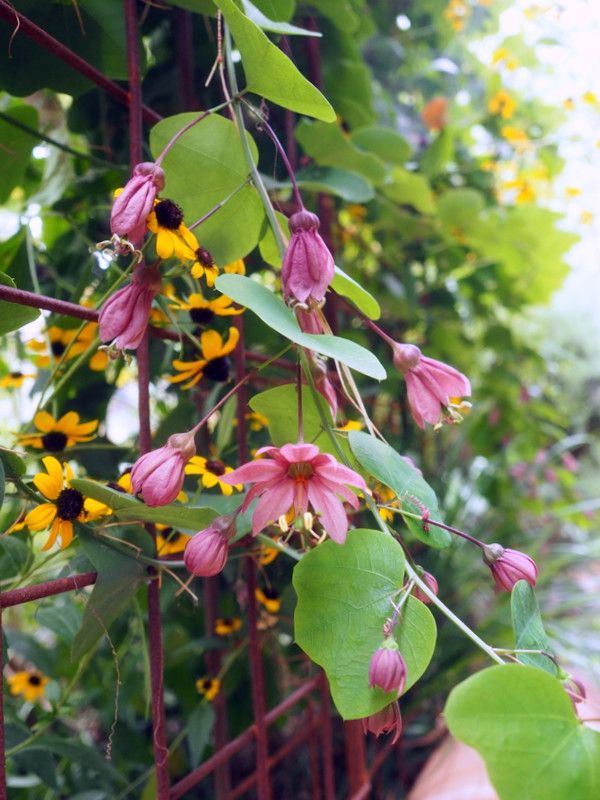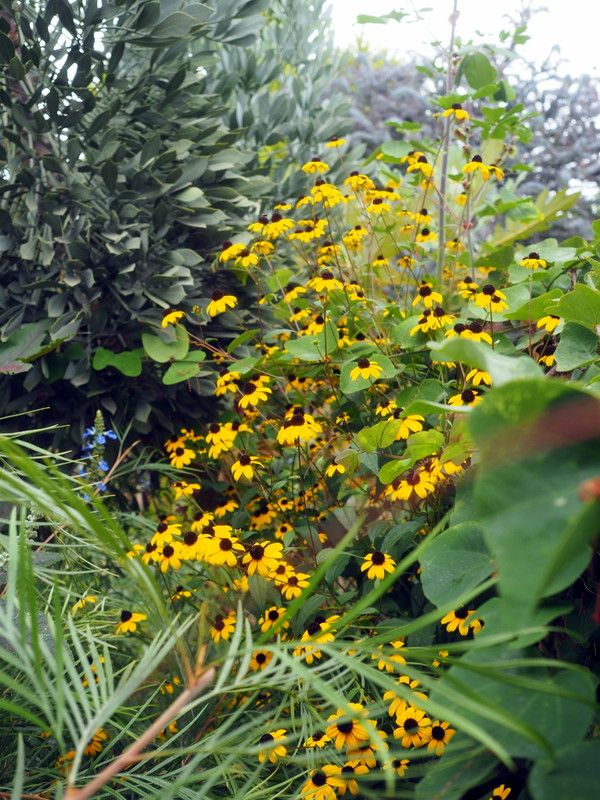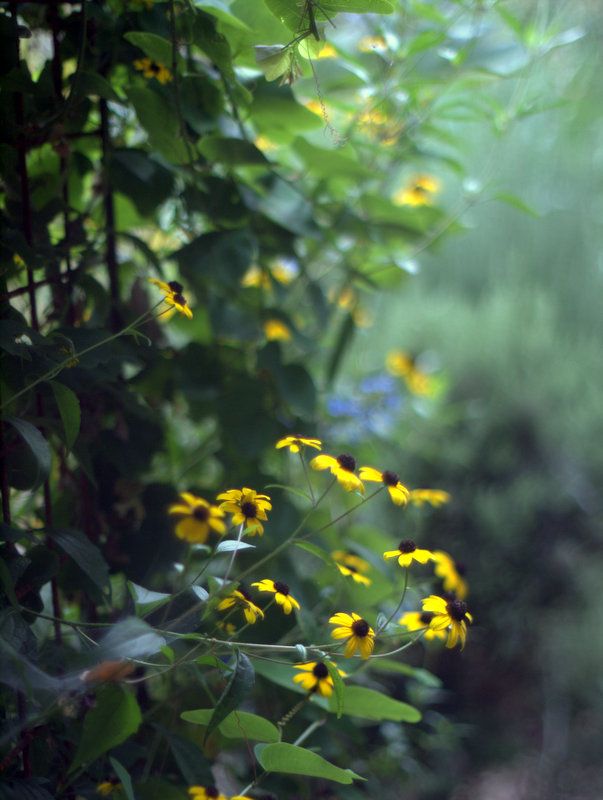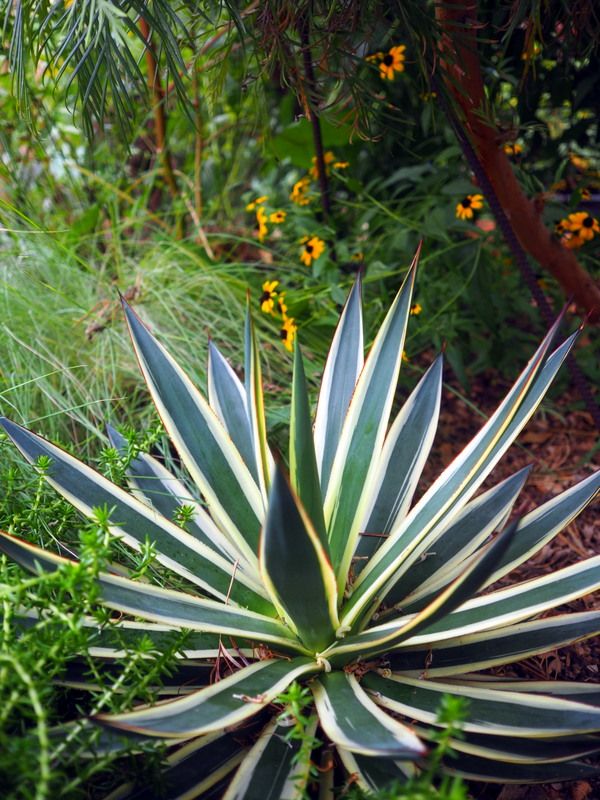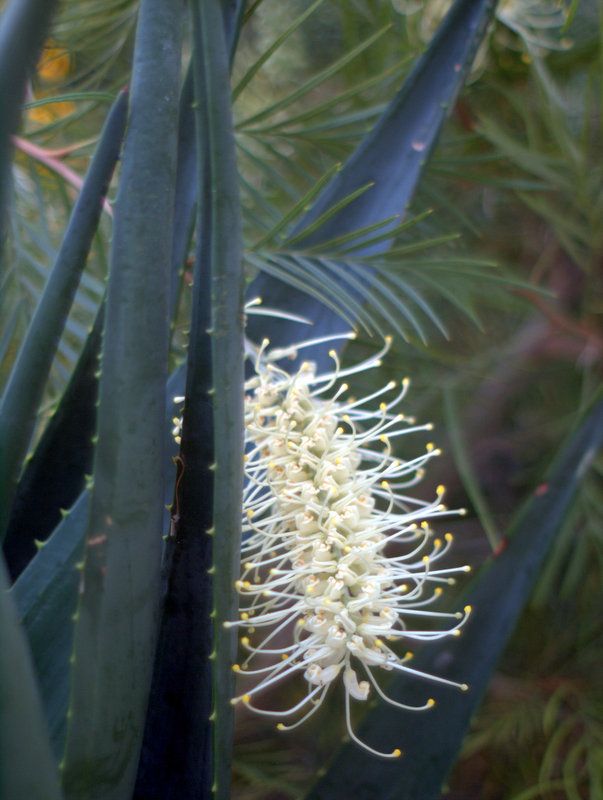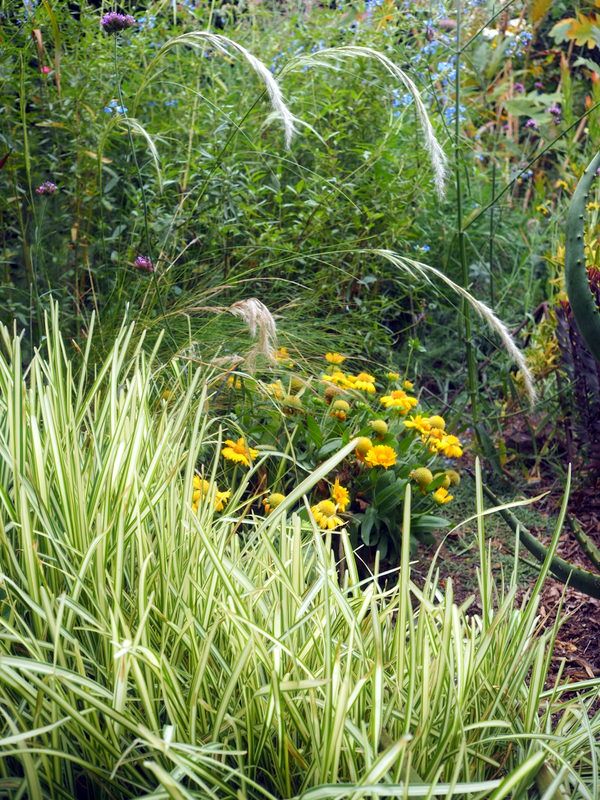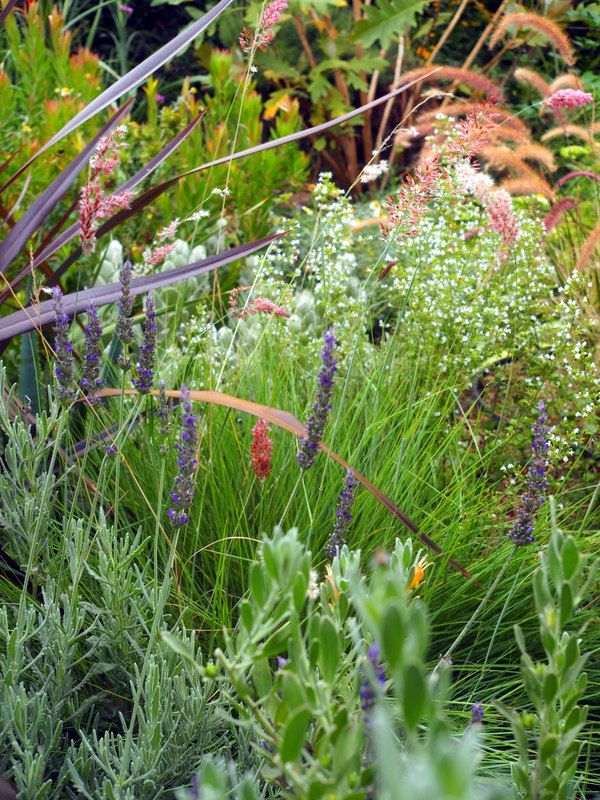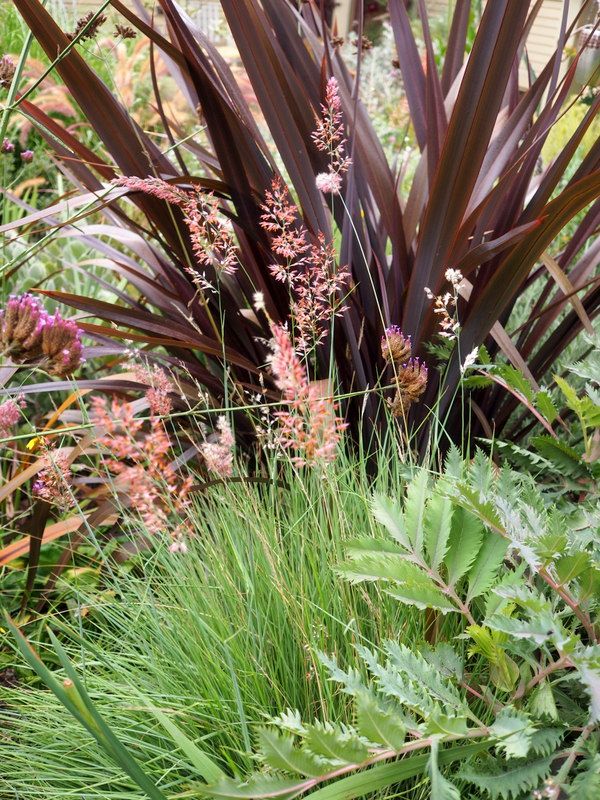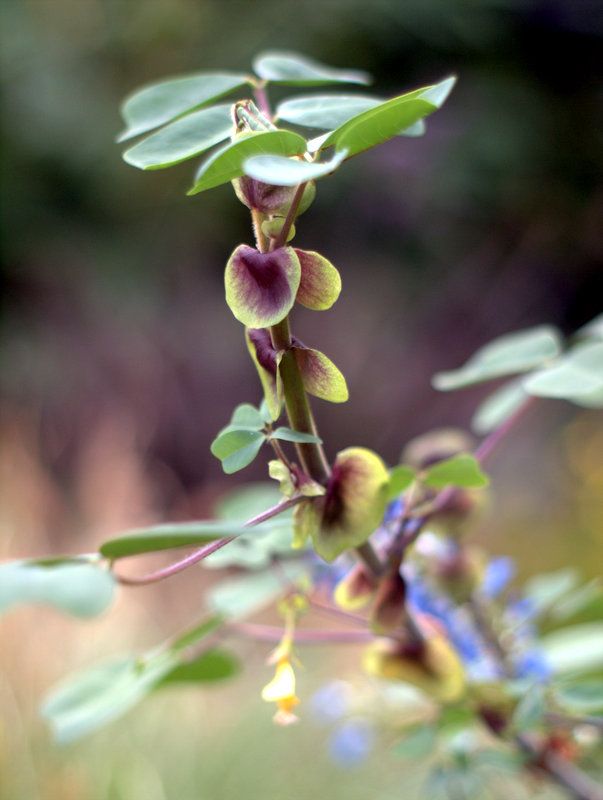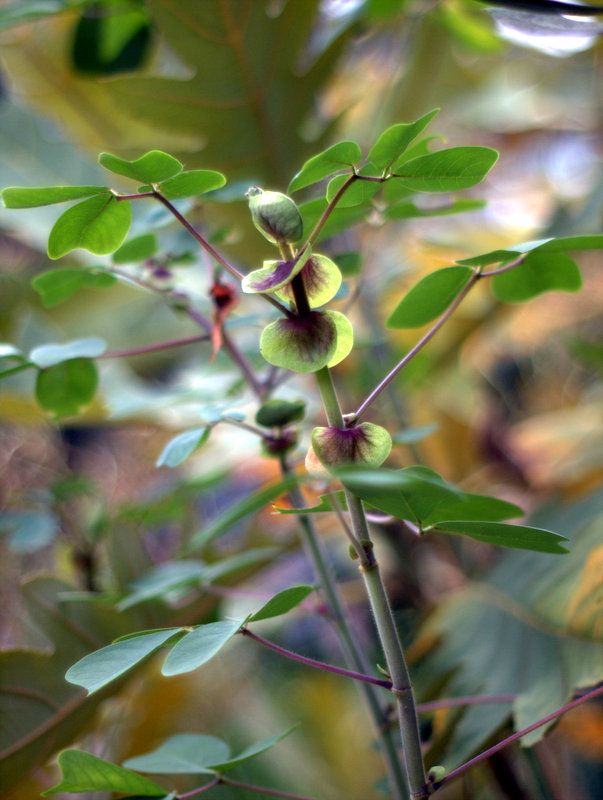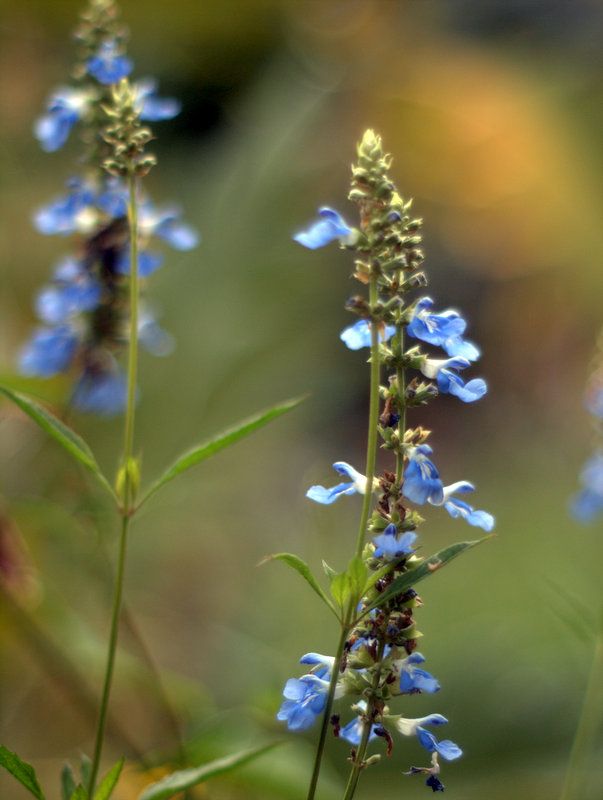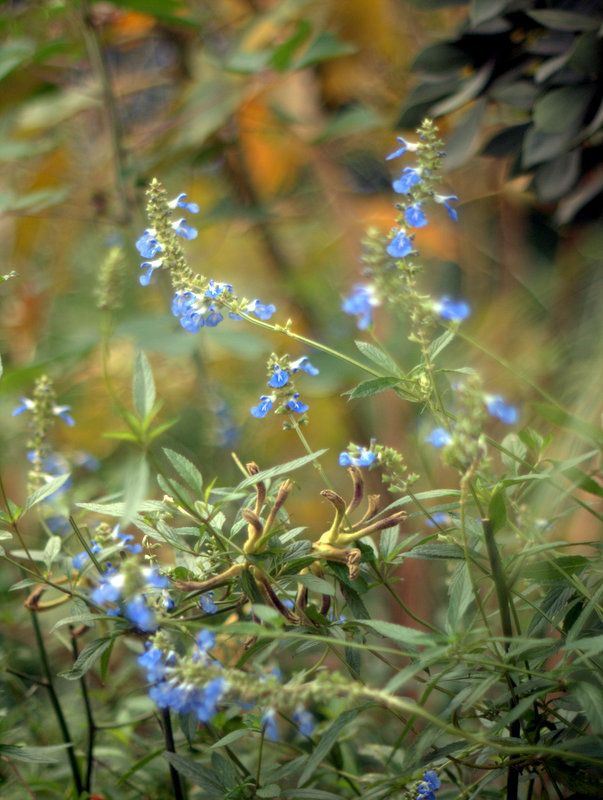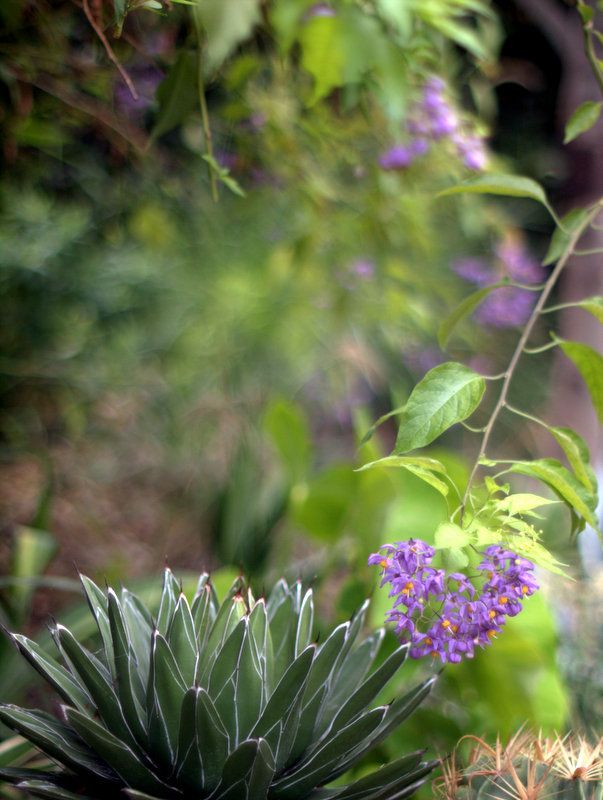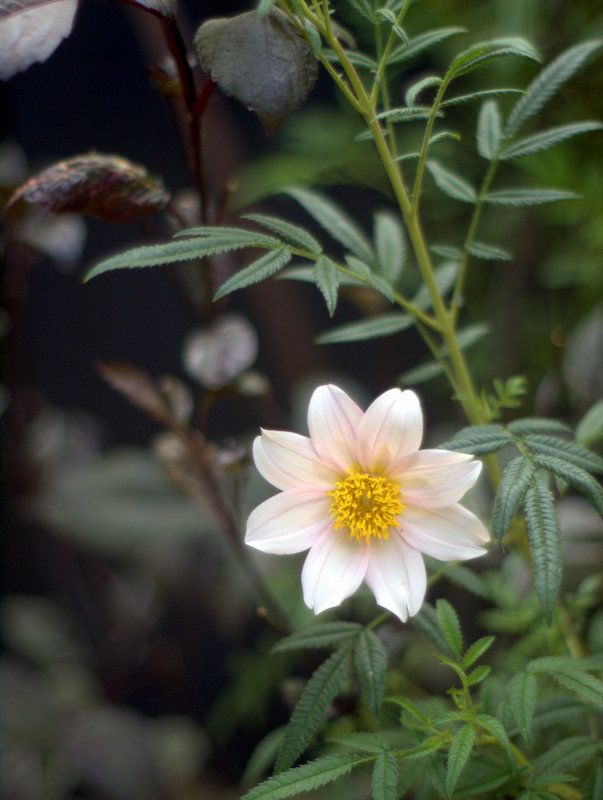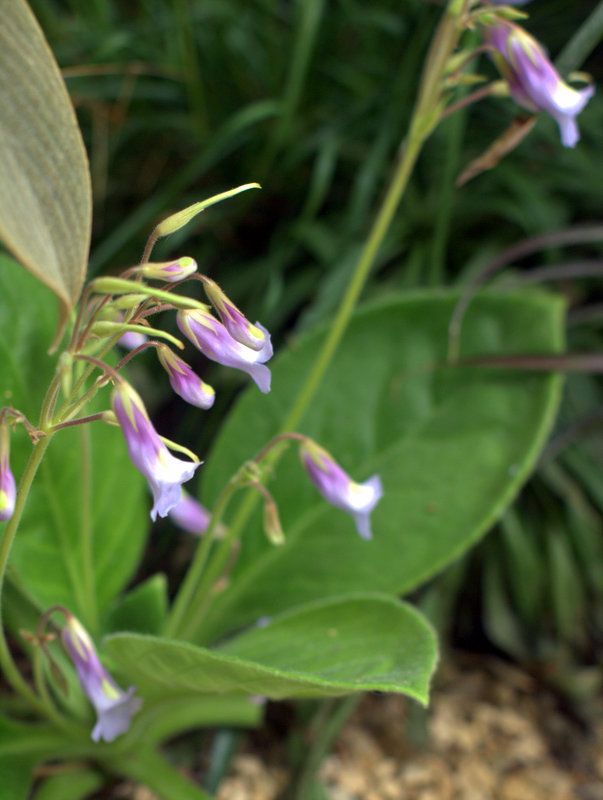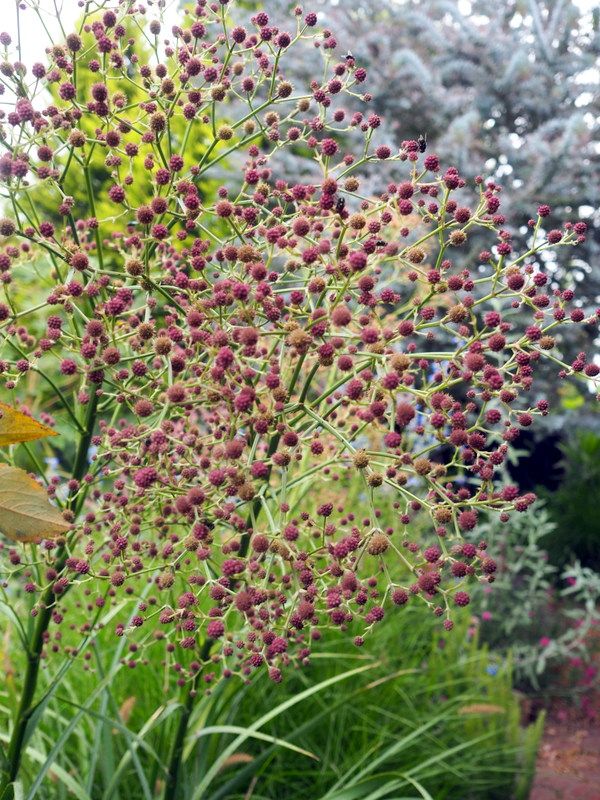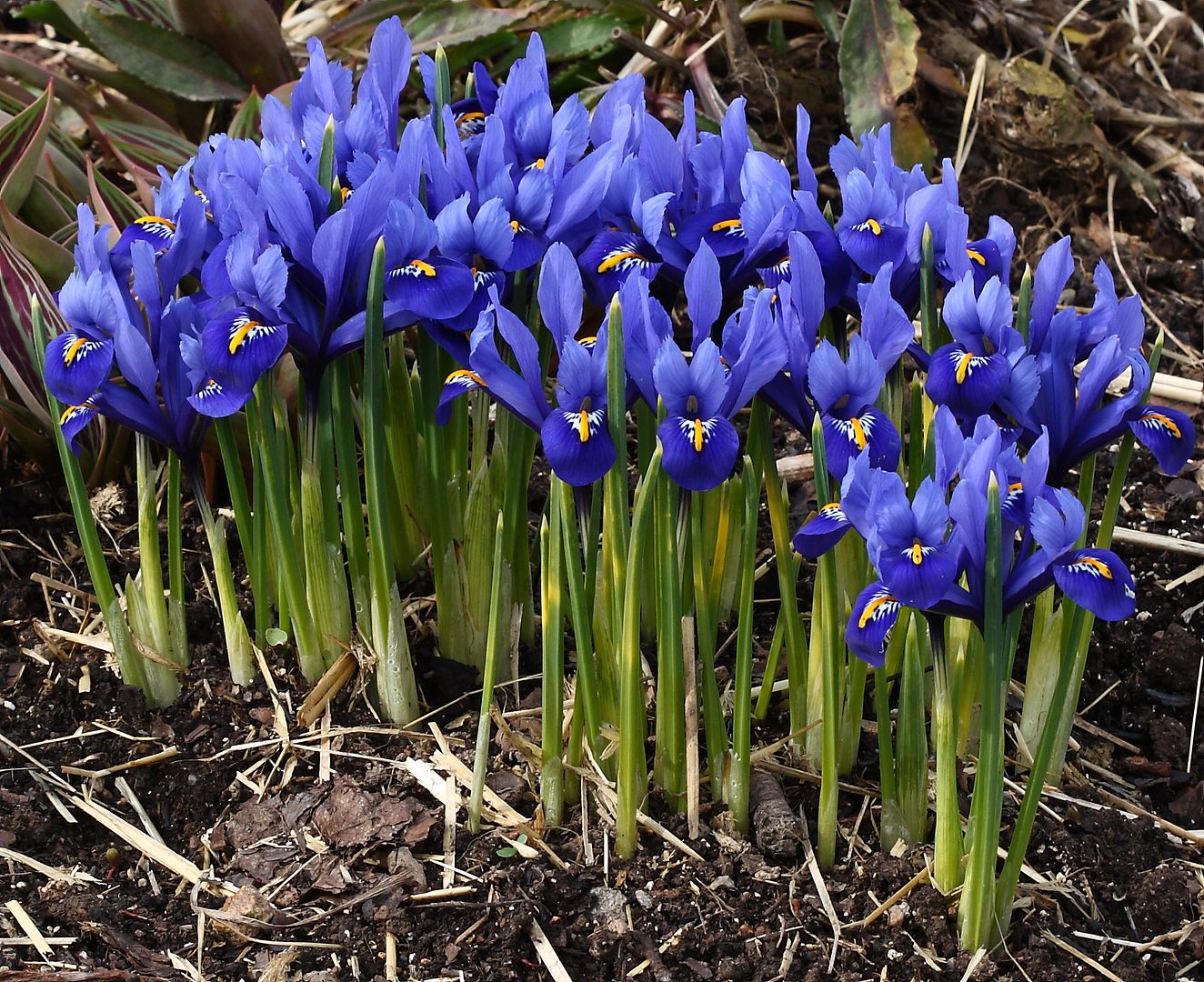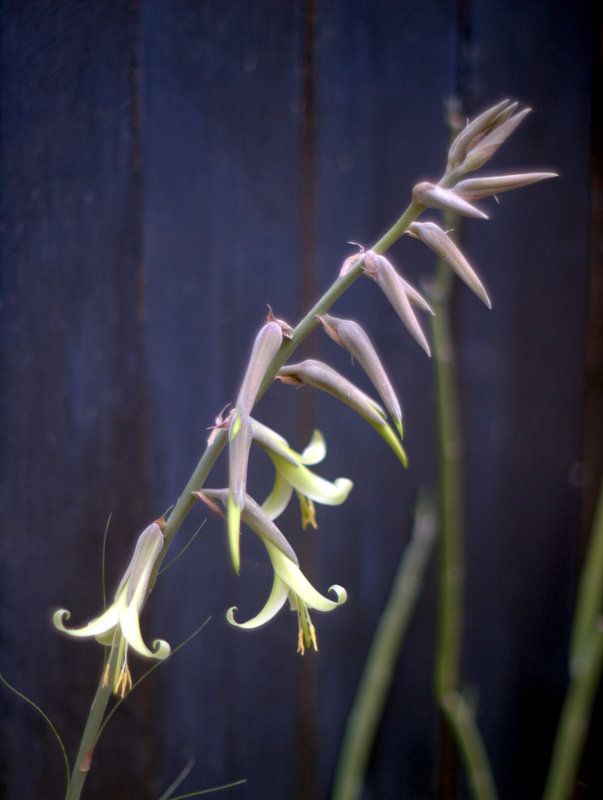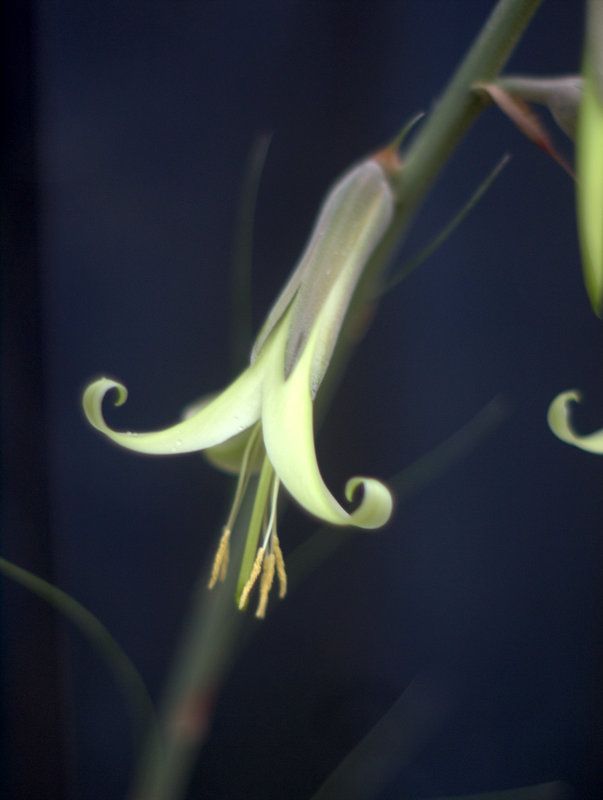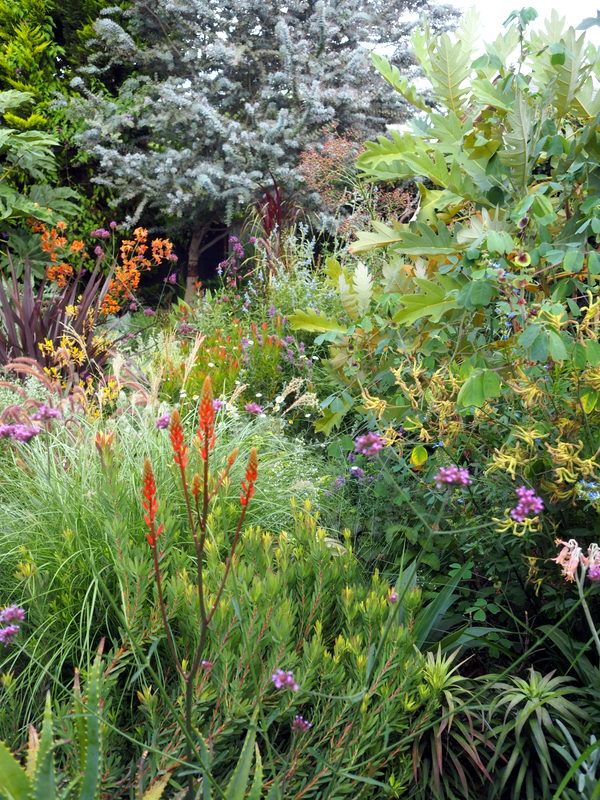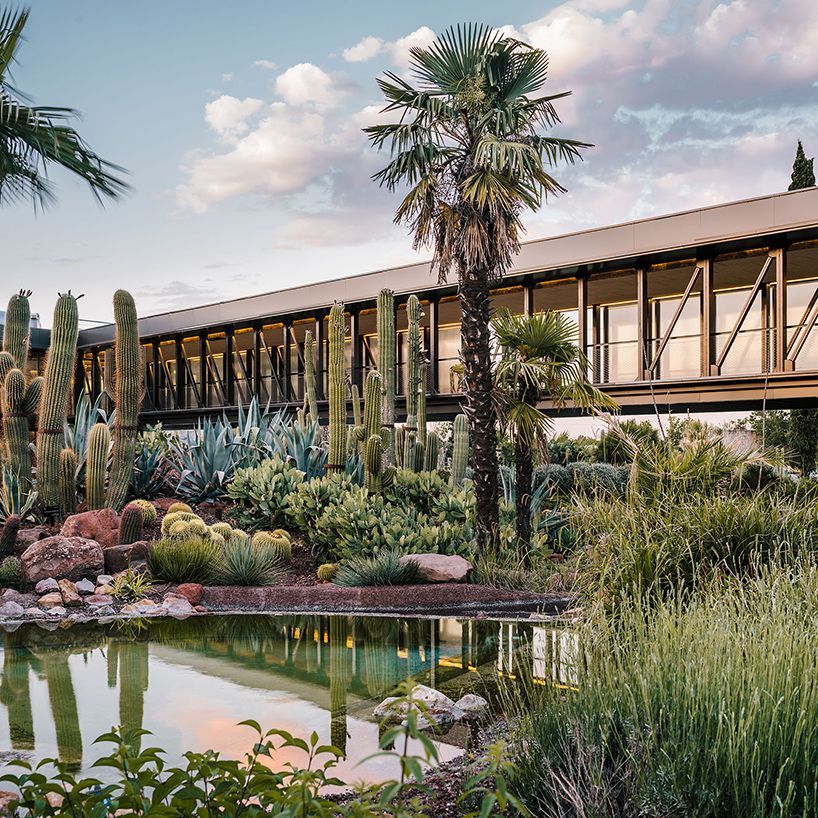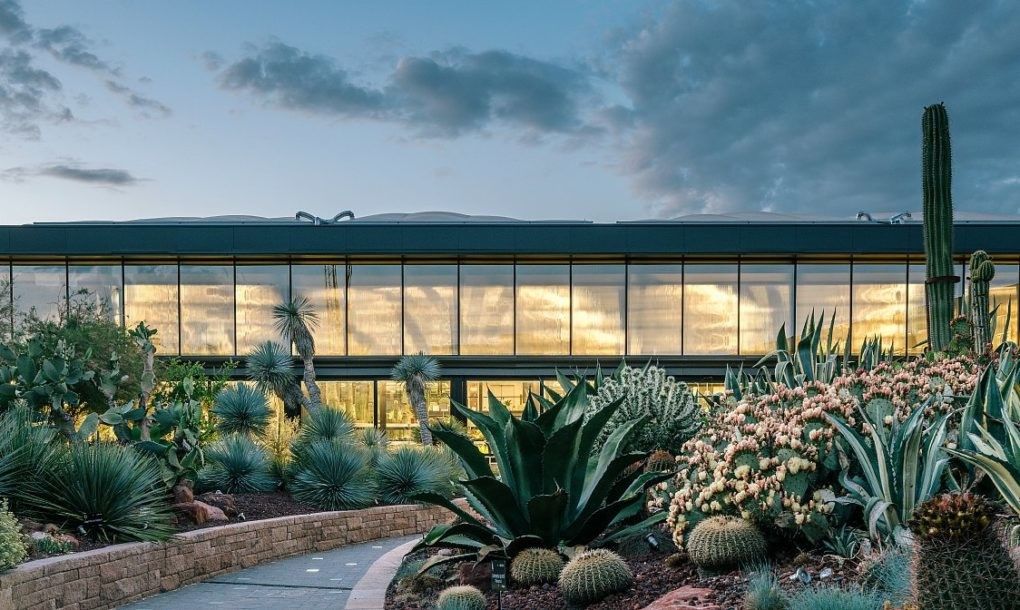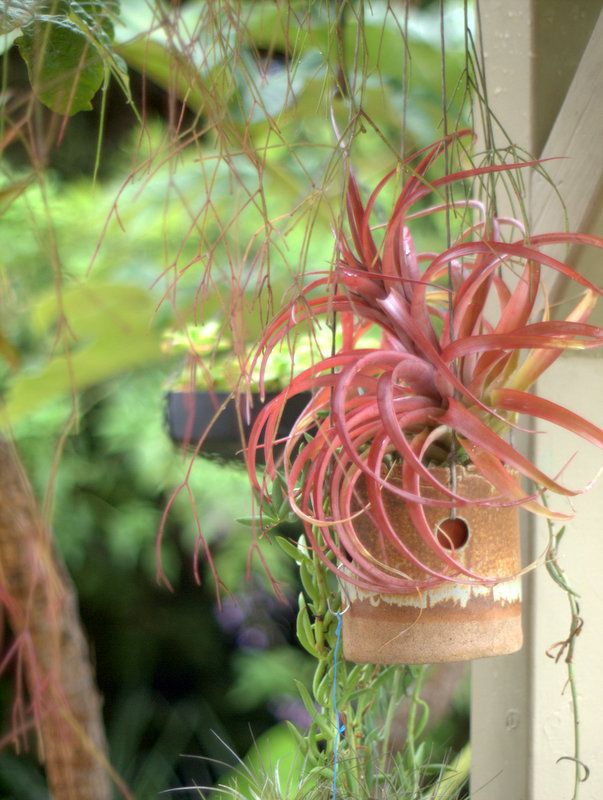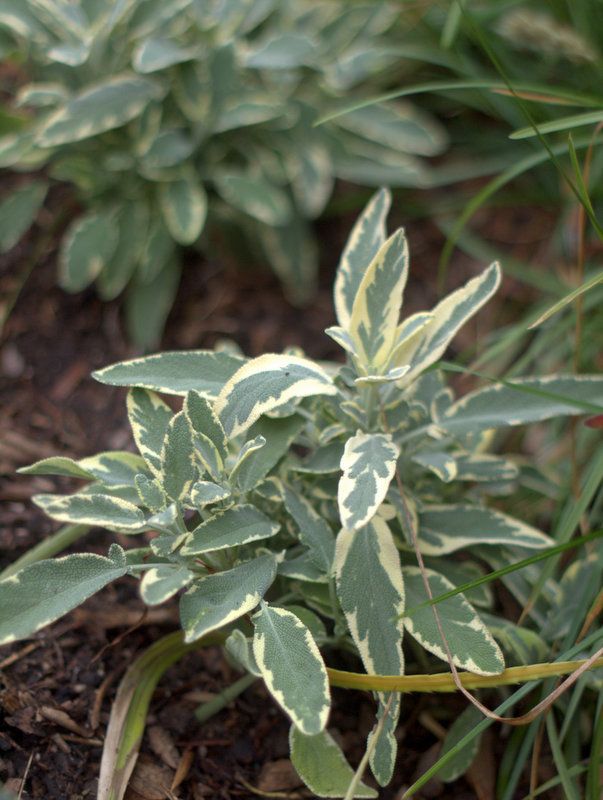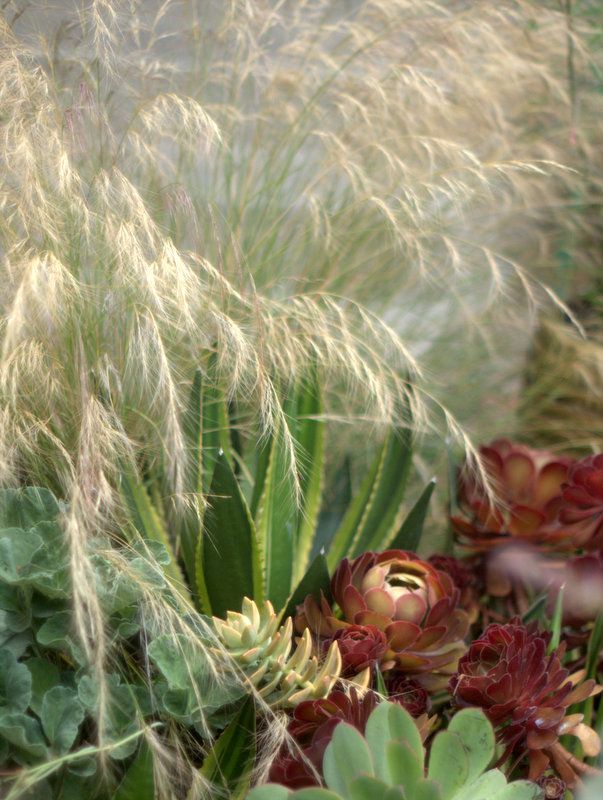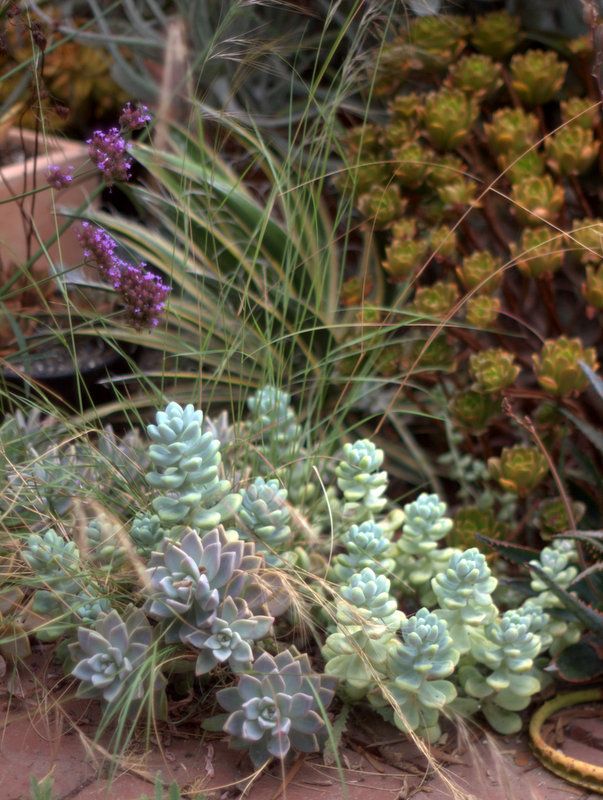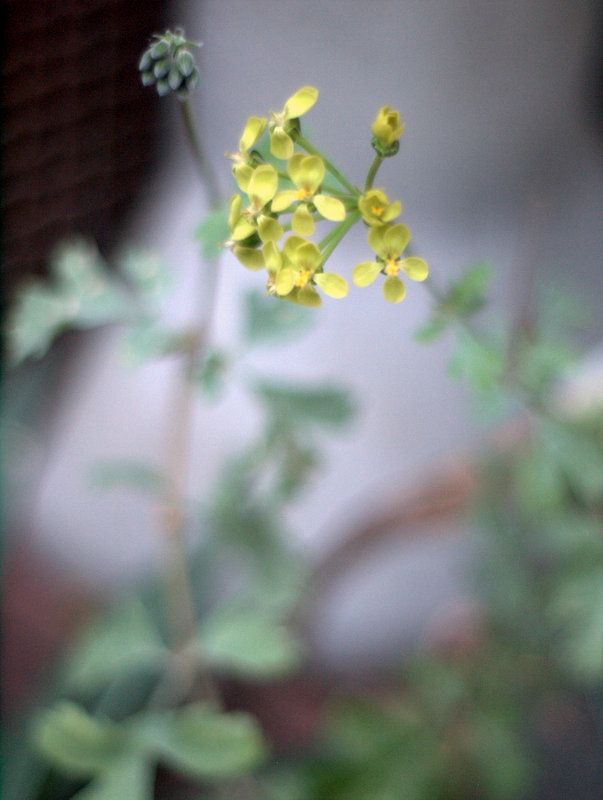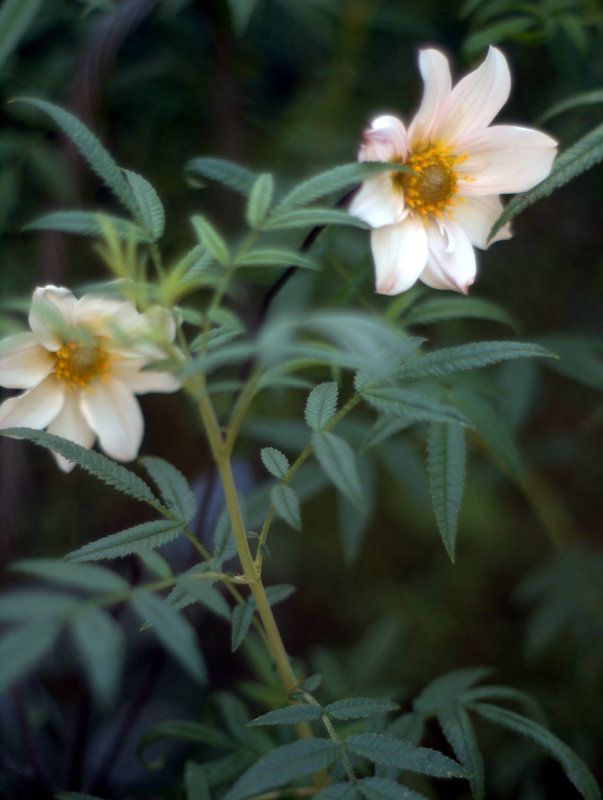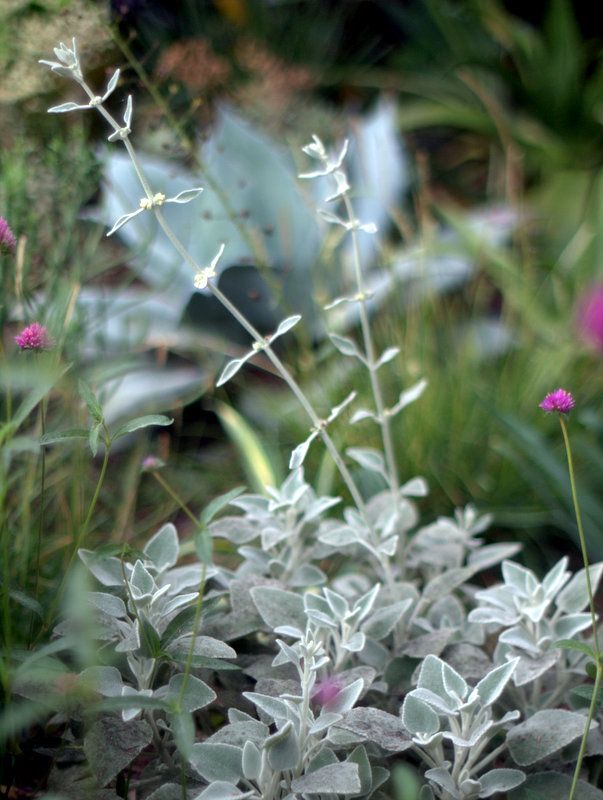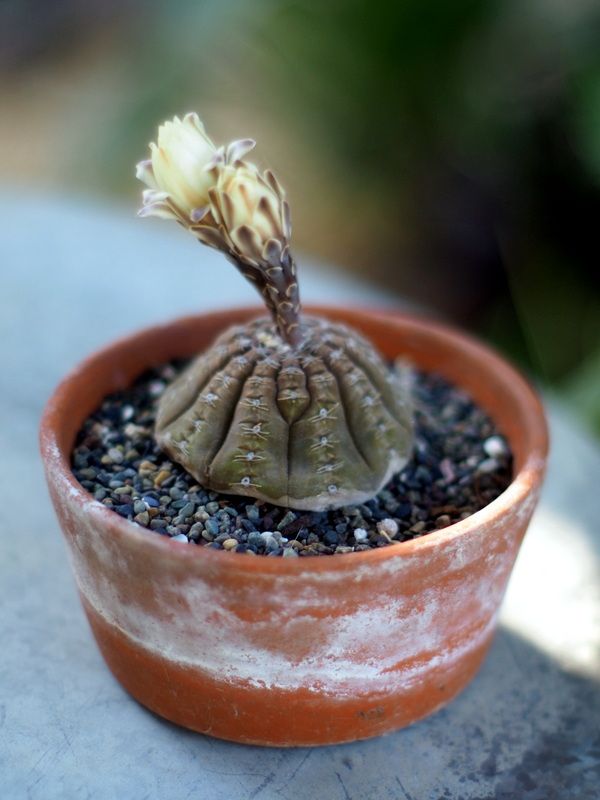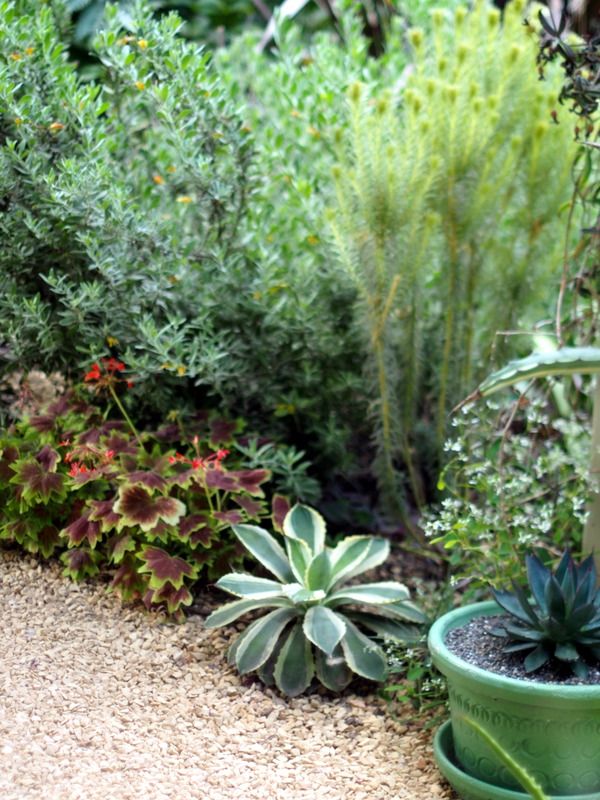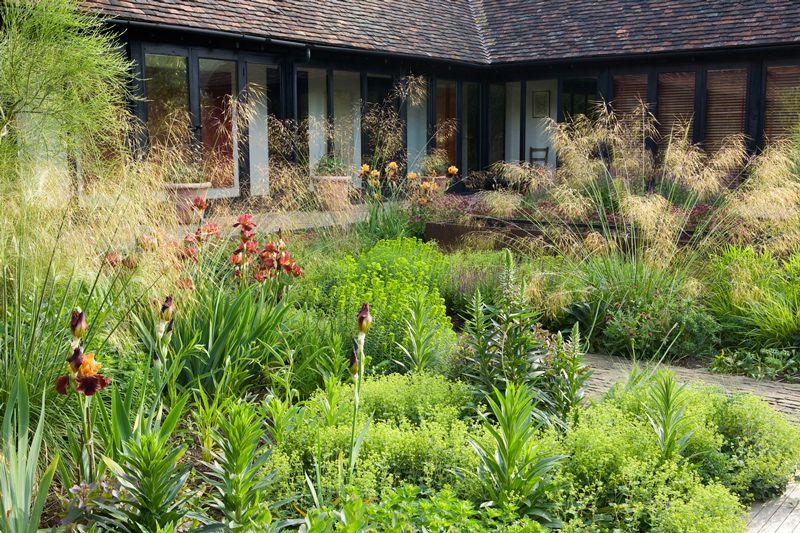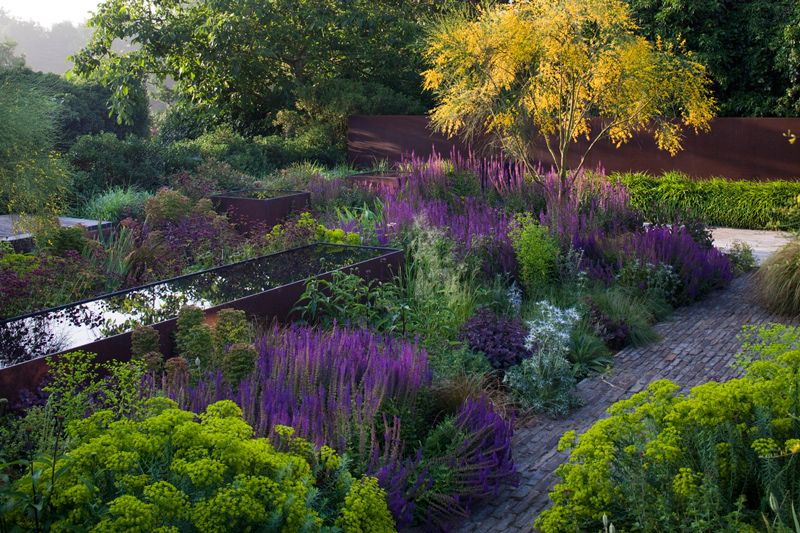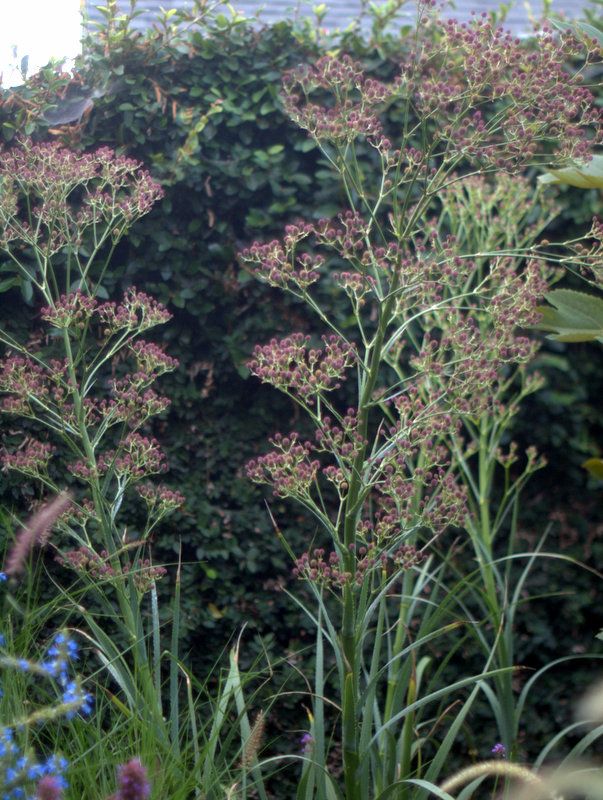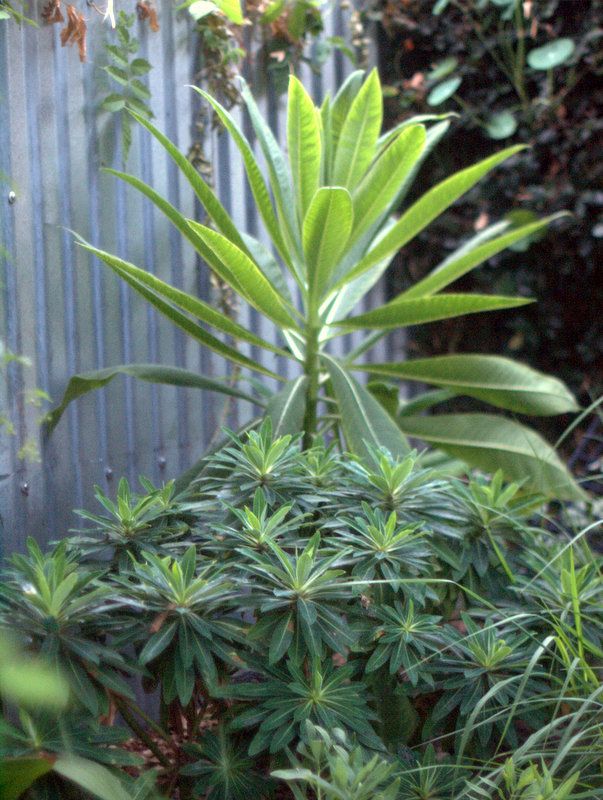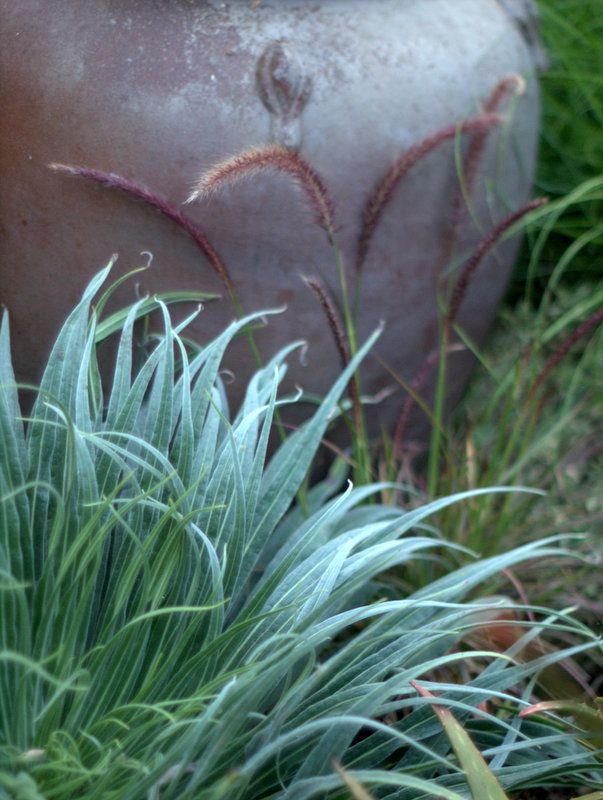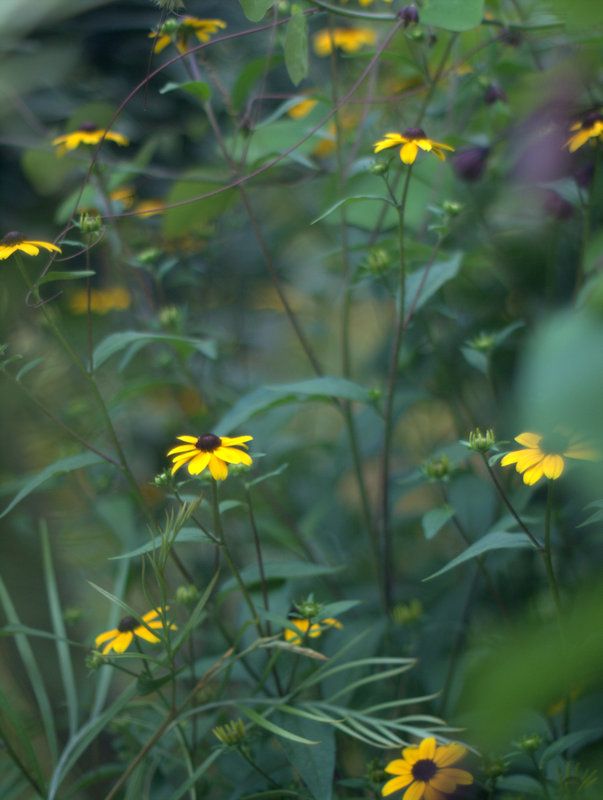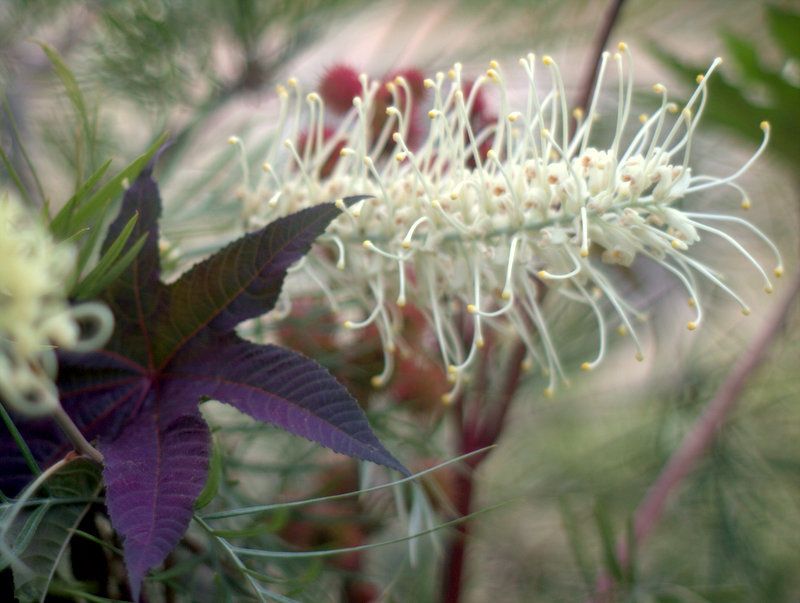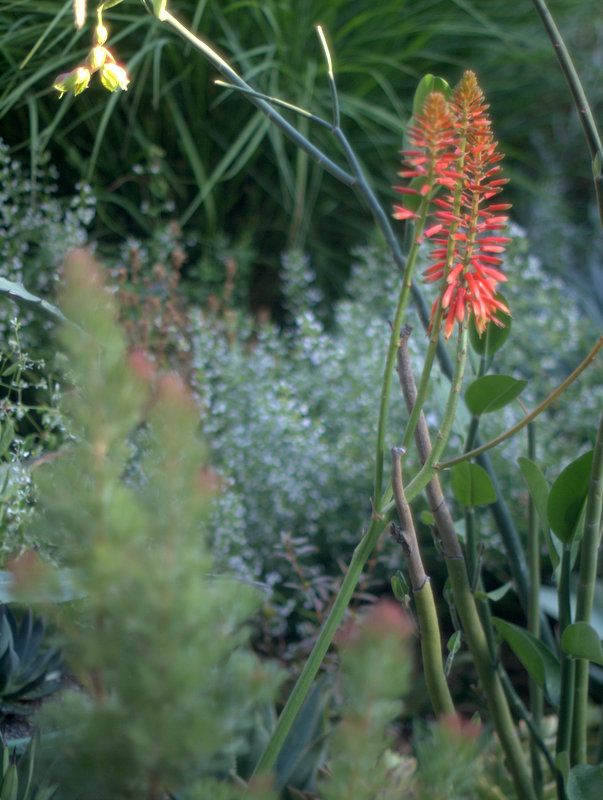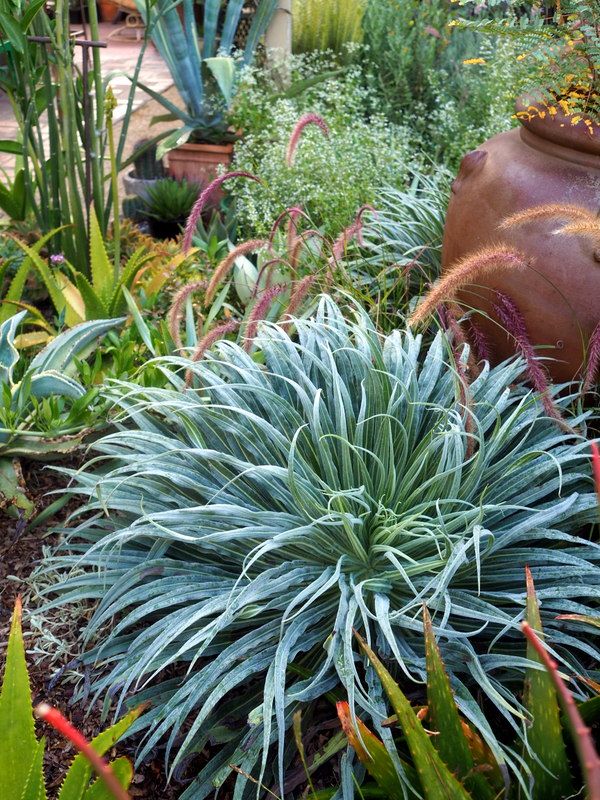
I know I mostly talk about plants with a micro focus trained on their singularly gorgeous attributes, like Echium wildpretii above, but with this post I’m going to pull out of that narrow focus a bit and go wider.
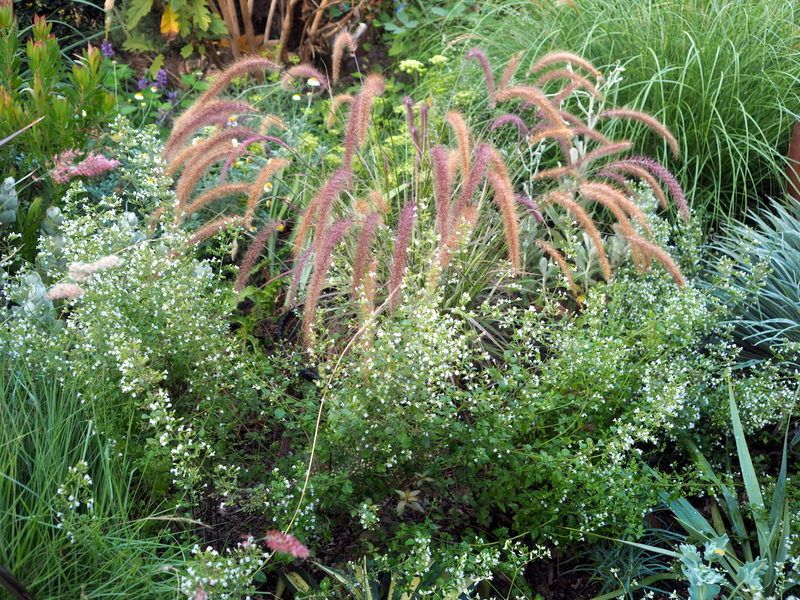
Normally I’d want to tell you more about my new crush, Pennisetum ‘Cherry Sparkler,’ and my hopes for it being the one, a mediumish-size grass whose girth doesn’t exceed that of a small car in a single season. But it’s nearly mid-August, and we’ve all been through a lot of summer. A lot of summer and smoke, to crib from Tennessee Williams. And it only makes sense to plan for increasingly hotter and longer summers. (I just read about more horrific wildfires, this time in Montana, in today’s NYT.) But do you ever consider how your plant and design choices will impact the temperature inside your home? Maybe it’s me, but I don’t see this subject broached very often. Over the past 28 years, I can’t help but observe how choices in my own garden have impacted our little bungalow’s livability, especially during the crucible of summer. As of today, we have yet to install air conditioning, and this summer we’ve been reasonably comfortable. We talk about this all the time, and for a brief moment this summer a portable AC was purchased but ultimately returned. If we had triple digits for weeks on end, I might rethink the AC issue, but for now I’m willing to let the power flow to those much more in need of it. And we are only a mile from the Pacific Ocean, so definitely YMMV.
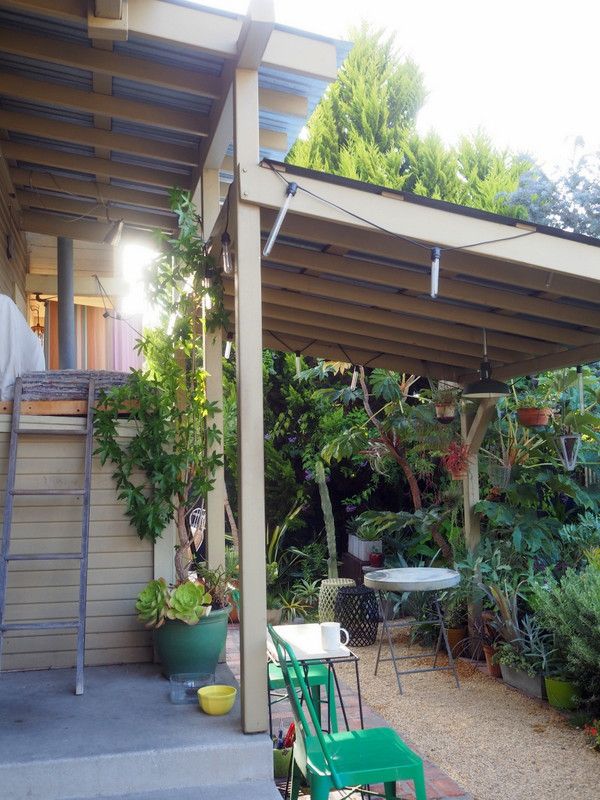
Some of the main cooling and shade features are built, not planted, starting off the back porch of our 1,120 square-foot house. The pergola attached to the house has two levels, with the topmost level extending as a roof over the little concrete porch and shading the kitchen windows forward of the porch. The ladder leads to the berth above the laundry shed, where you can always catch a breeze and great views of birds and other wildlife shenanigans. The striped fabric at the far end is hung for both privacy and shade from morning sun. There’s usually a dog-eared New Yorker stuffed under the cushions. The entire structure brings critical shade to this south side of the house. Shade can be accomplished with trees, of course, but for a small area so close to the house, a pergola affords complete control, without danger of falling branches or root intrusion. We’ve experienced both falling branches and trees and much prefer the relative permanence and stability of the pergola.
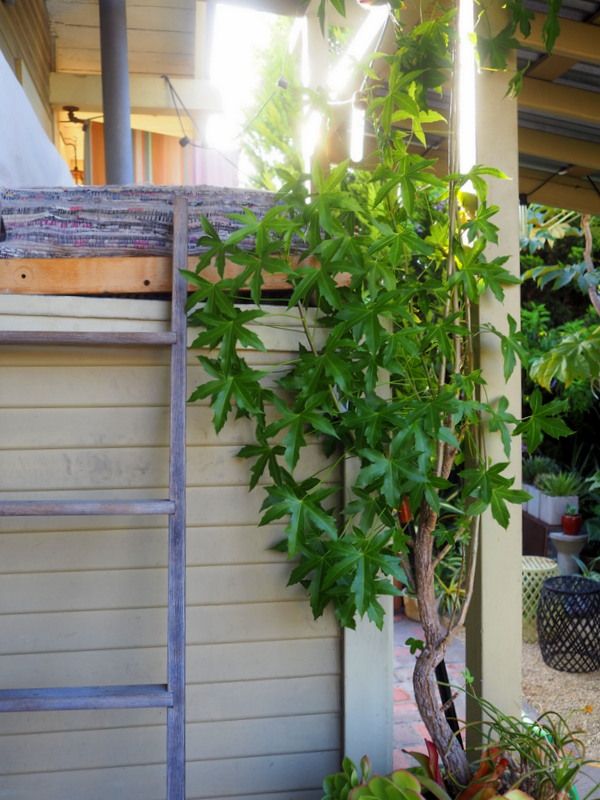
I do have to put the big picture briefly on pause to point out how well the potted Cussonia natalensis is doing this year. Old habits die hard.
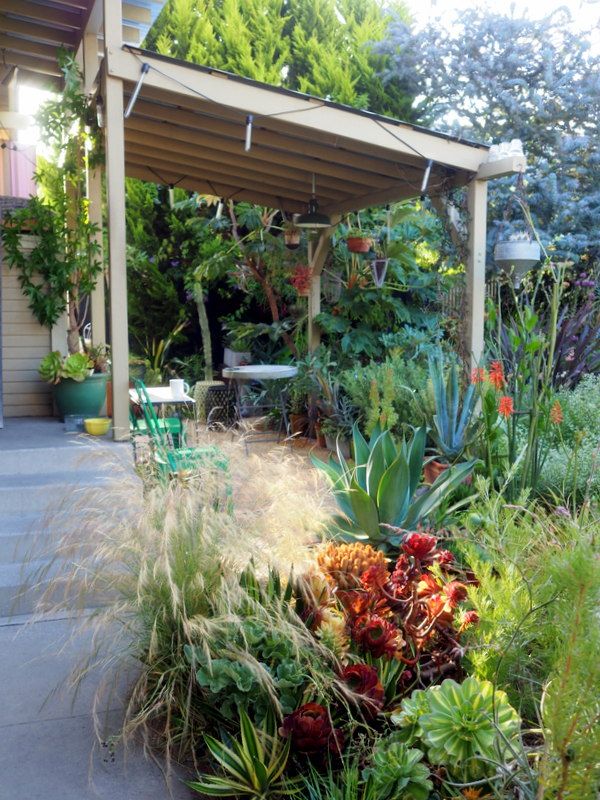
Pulling back again to show how the planting starts in earnest just feet away from the house and back porch, but that’s just my preference. Maybe you’re more of a Thomas Church devotee (“Gardens Are For People“), and would prefer less plants and more open space for entertaining, and I agree with that to an extent. But lots of plants do result in an incredible cooling effect. So that’s a trade-off everyone has to cipher out for themselves, but I’d just keep in mind the warmer summers to come (and all the cool plants out there waiting to be grown).

Succulents and small evergreen shrubs like Eremophila glabra and lavender surround the pergola, and then the planting gets crazier with summer ephemerals such as Salvia uliginosa way in the back, where their winter absence won’t be as noticeable.
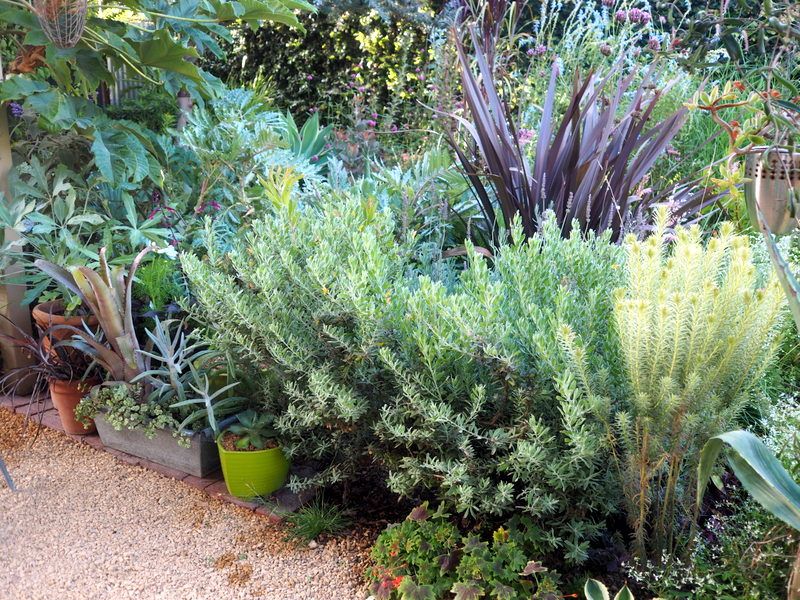
My garden philosophy aims at being the girl with the most cake, with as much year-round inspiration and stimulation as I can squeeze out of a small garden. And I’d be the first to admit that I probably live in a constant state of over-stimulation.
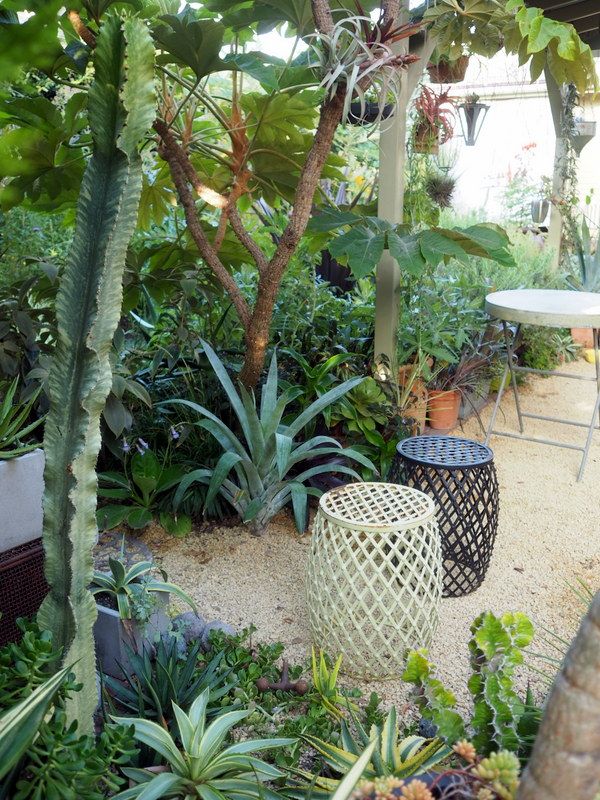
Looking west under the pergola. In a couple weeks we’re hosting an engagement party for my youngest son, so I’m trying out the two metal drums as a temporary barrier to keep kids from getting lost or speared by an agave in the jungle.
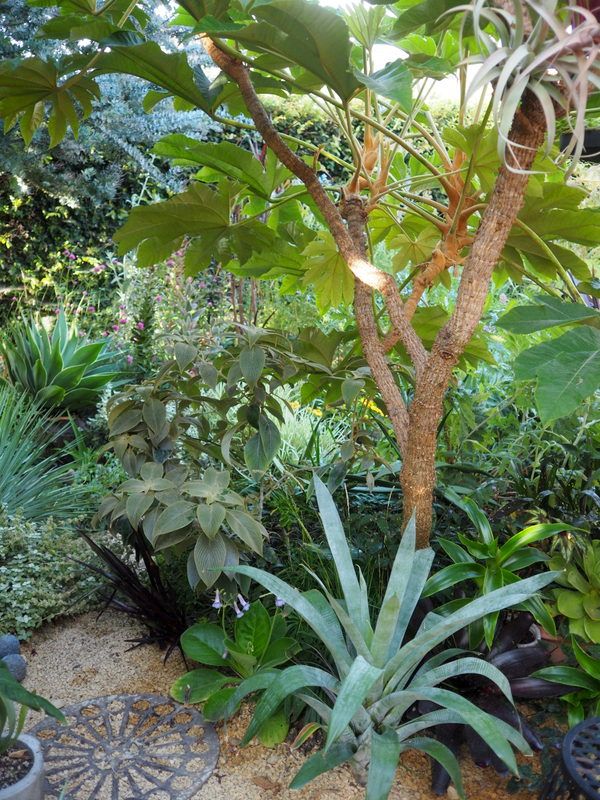
Dramatic and flamboyant rosettes like bromeliads and agaves are big on presence and light on water. The high shade provided by the tetrapanax are perfect conditions for bromeliads in summer. In winter many of the bromeliads get moved into full sun.

The lemon cypresses and acacia are providing increasingly more shade at this eastern end, and some things may have to consequently be shifted around, but the positives so outweigh the negatives. That’s Tanglefoot smeared halfway up the acacia’s trunk, btw.
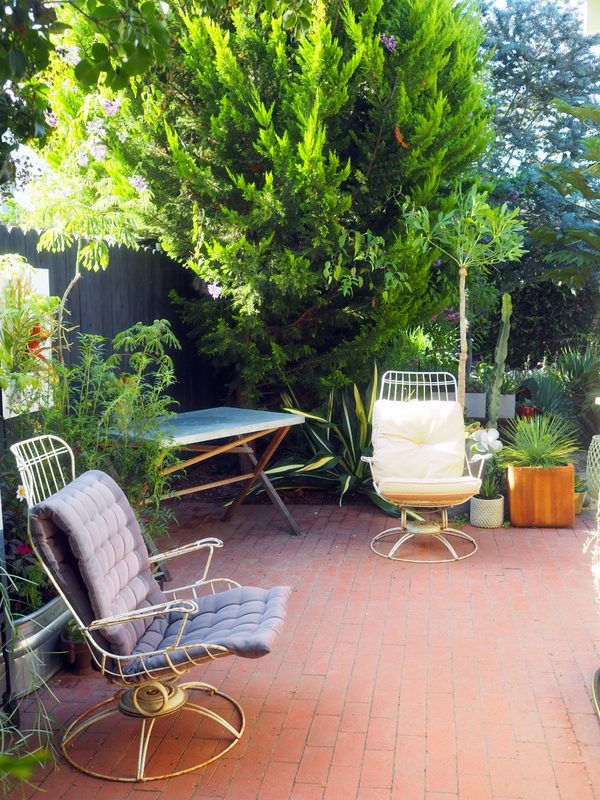
Continuing under the pergola toward the east leads to this brick-on-sand laid patio. The lemon cypresses were planted with privacy in mind, as was the Acacia baileyana ‘Purpurea,’ to their right, but the cooling effect from all three has been a huge side benefit. The cypresses are approximately 20 feet tall now and may reach 30 feet. (I’m thinking of setting up the bar for the party on the table in the corner.)
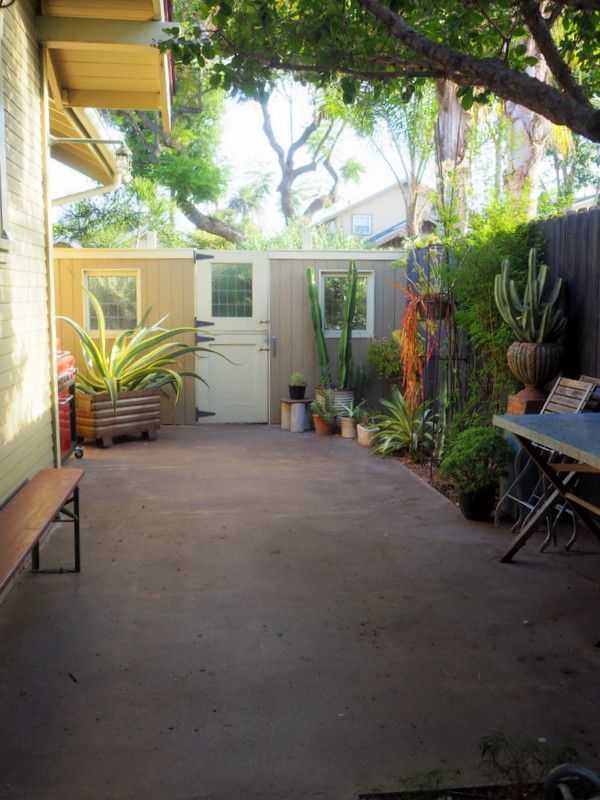
The bricks lead further north into the “East Wing,” which is uncharacteristically empty for the moment and in the midst of getting cleaned and ready for the engagement party tables and benches. The branches in the top right foreground are the Chinese Fringe Tree, which sits roughly in the middle on the east side of the house, and the trees beyond the Dutch-door gate are the parkway jacarandas. The adjacent neighbor’s choice of Queen palms along the eastern boundary has added more high shade and privacy for us without the dreaded “dungeon” effect. Once you start thinking about shade, you realize how many kinds there are: light shade, deep shade, dappled, etc.
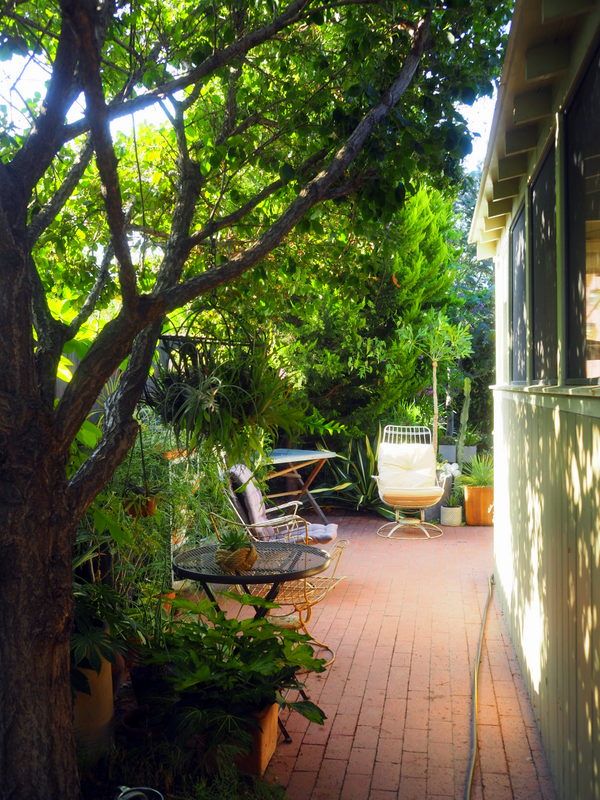
Another structure that cools the house is the bath house/bird house off our bedroom. Around March we remove the glass panes and use only screens until around November, and the sliders from the bedroom to the bath house are constantly kept open to cool the bedroom through just the screen door. This side is so narrow that I can’t get a full-on photo. I begged for a bath house, Marty complied and built it single-handedly, and then I let parakeets take over. (Just because I am an unstable person, and Marty has learned to graciously live with that fact.) But neither of us realized at the outset what a cooling effect the structure would have on the main house, basically functioning like a screened-in sleeping porch.

The view out the bedroom, through the bath house to the east fence, through the canopy of the Chinese Fringe Tree, Chionanthus retusus, now forming its inky berries that will end up as navy blue bird shite splashed over plants, bricks, etc., but it’s easily hosed off, and I love hearing the birds (and squirrels) hopping around in the tree. You can see where the parakeets chewed into the wood above the roller blind.

Another structural change, admittedly a very low-effort one, was opening up this little sunroom off the kitchen on the west side. It’s been a revelation in air flow dynamics, and I’m convinced it’s now the lungs of the house. It’s always been used as a bedroom and was just this year finally emptied out and turned into a little reading room. In contrast to the privacy requirements of previous occupants, doors and windows have been flung open, and a screen door has been added to the doorway that leads to the porch off the driveway. Opening its doors and windows is now part of the morning ritual, along with making the coffee, feeding the cat, turning off the porch lights.
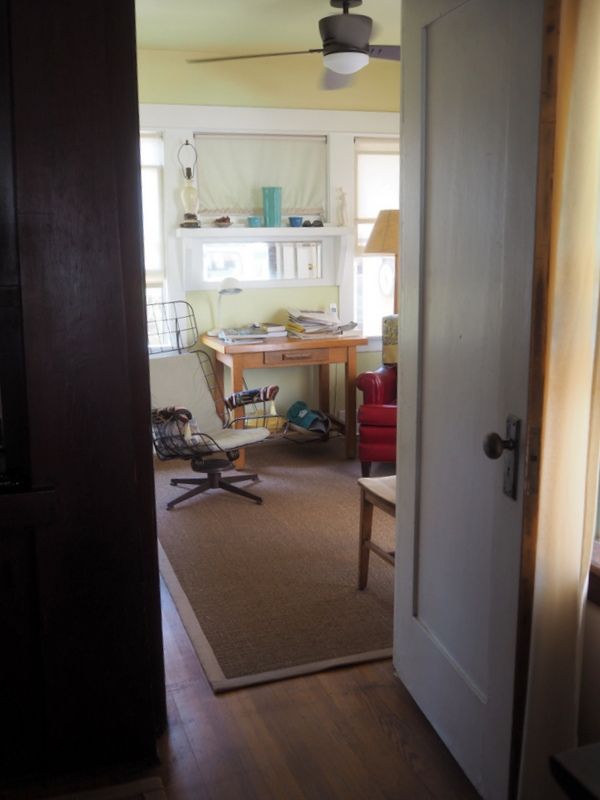
This door from the main house into the little sunroom has always been shut, too, again because privacy for its revolving teenage occupants was paramount. (I do wish I’d cleaned up a bit before photos.) Now I love to sit here and feel the cool air pour in off the garden in the evening and mix with cross-currents of ventilation coming from elsewhere in the house. The bungalow builders were masters at maximizing cross-currents, but it’s rare that their original intentions remain relevant as the original footprint is fiddled with by subsequent owners. The trick now for us is to keep the old sash-weight, double-hung windows in working order so the air can flow in from all directions. It’s a lot like taking care of an old wooden boat, and the floors creak just about as much too. (This article in Curbed discusses similar cooling and cross-flow strategies built into the old “shotgun shacks” of the South: “One of the most effective forms of air circulation is a ‘cross draft,’ an interior breeze that forms when two openings in a building -— windows, doors, and the like -— align.”)
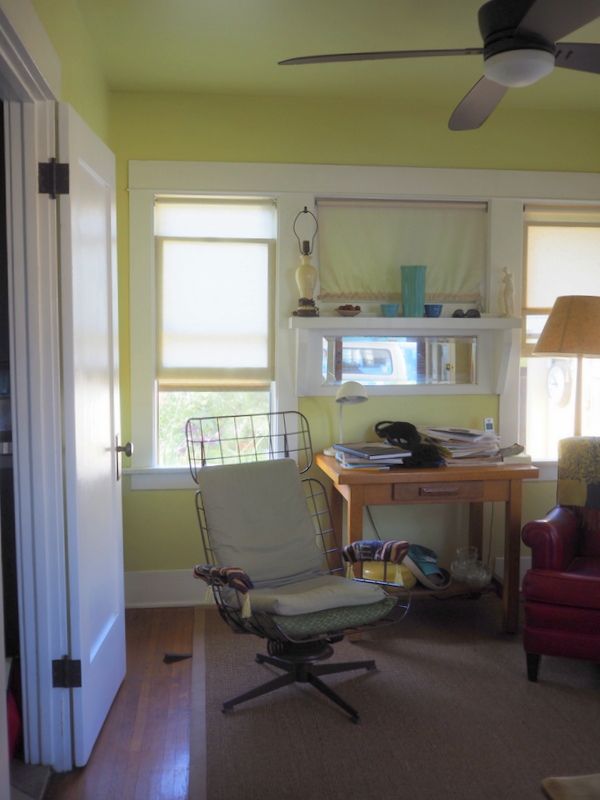
“The idea of cooling a house in hot climates is nothing new—ancient Egypt used courtyards to promote air flow through buildings,” says Jonathan Hogg, associate at Ferguson & Shamamian Architects. “Providing air circulation is simply essential to summertime relief.” — Curbed, “How Houses Were Cooled Before Air Conditioning.”
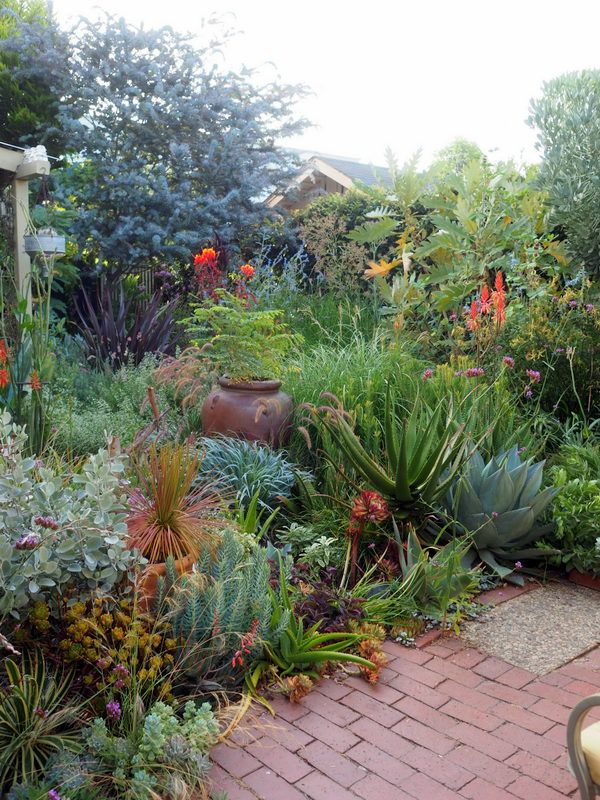
The view of the garden directly outside the reading room windows, the brick walkway about 6 feet across, leading to the office (half of the former garage).
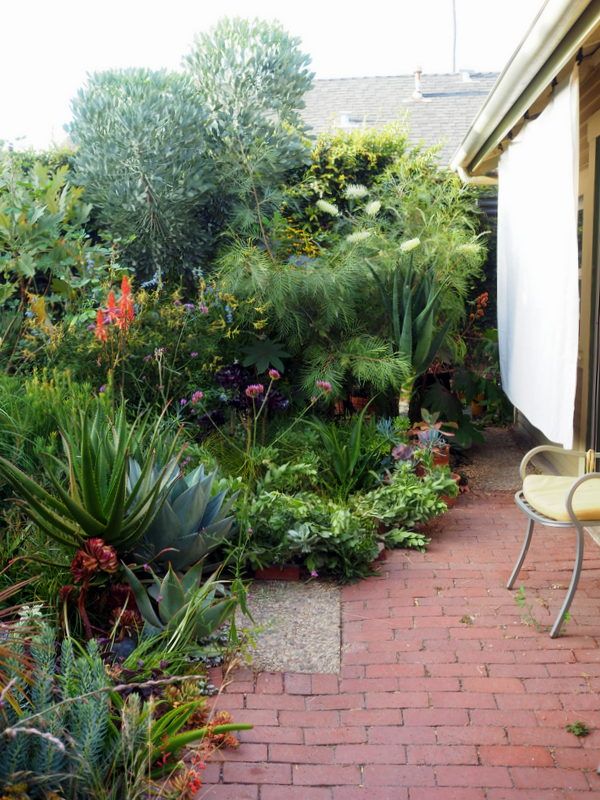
Possibly overplanted just a bit, but this is peak summer after all.
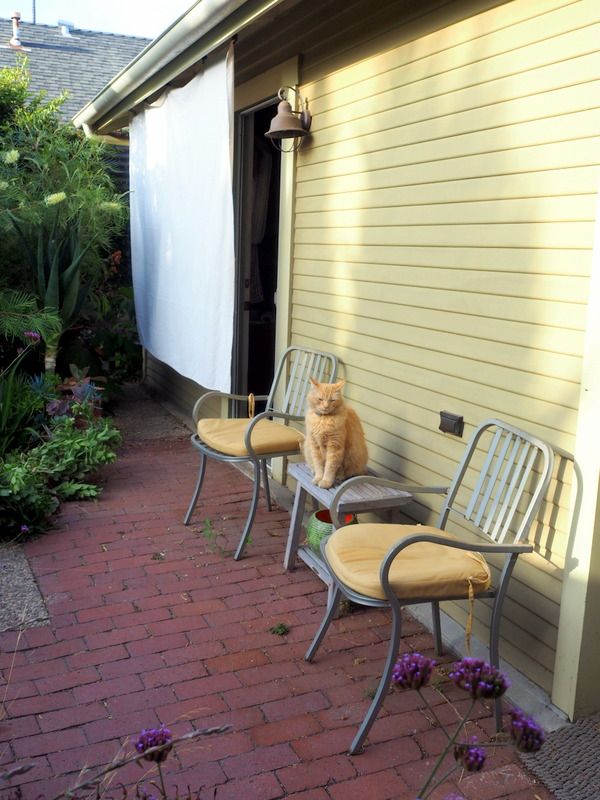
Just wide enough for a couple chairs and a table. The canvas painter’s drop cloth tarps are a low-tech hack for seasonal shade requirements. In summer the morning sun is directed blindingly on the doorway.
For brevity’s sake (ha!), I’ve limited this post to the back garden. The west side of the house is all driveway and workshop areas, partly concrete with some porous brick-on-sand areas, and we use overhead tarps here, too, in summer for shade when working on projects. The long, narrow, north-facing front garden is shaded by the parkway jacarandas. It is privacy-hedged by some shabby box on the north and ‘Little Ollie’s,’ dwarf olives, on the east. The Pearl Acacia has grown into an enormous shrub on the northwest corner of the house from all the cutting back it’s received to keep it from encroaching on the driveway, and I love the privacy and shade it gives the front porch and living room windows.
To sum it up, keeping the house cool is going to be an increasingly important consideration when planning the garden, and you might as well approach it directly, in contrast to our rather indirect, circuitous approach over the past 28 years.
